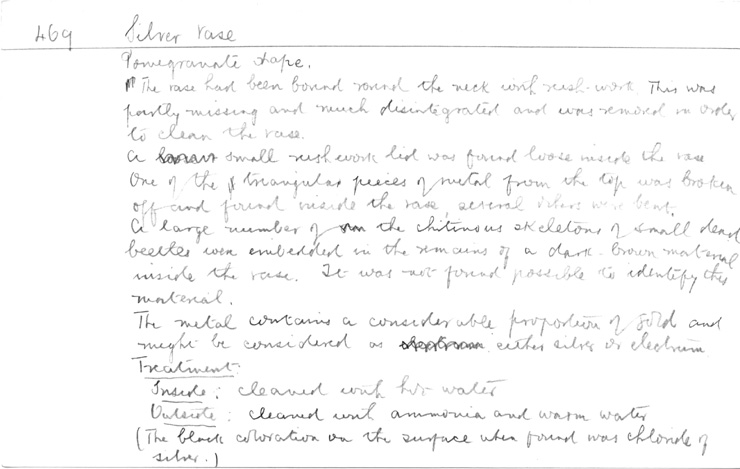Handlist description: Pomegranate vase (silver)
Card/Transcription No.: 469-2
469 Silver vasePomegranate shape. The vase had been bound round the neck with rush-work. This was partly missing and much disintegrated and was removed in order to clean the vase. A small rushwork lid was found loose inside the vase. One of the triangular pieces of metal from the top was broken off and found inside the vase, several others were bent. A large number of the chitinous skeletons of small dead beetles were embedded in the remains of a dark brown material inside the vase. It was not found possible to identify the material. The metal contains a considerable proportion of gold and might be considered as either silver or electrum Treatment: Inside: cleaned with hot water Outside: cleaned with ammonia and warm water (The black coloration on the surface when found was chloride of silver.)
